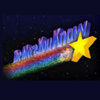Jessesky
Member
- Joined
- Aug 25, 2016
- Messages
- 981
Another post I made got me thinking. It was about handloads, achieving a desired velocity, and gas bleed-off in revolvers.
Why are there not more gas-sealed revolvers like the Nagant Revolver? It should perform better in theory, less dirty, and no cylinder blast. We could even suppress the big heavies. Think of a gas sealed 44magnum
Why are there not more gas-sealed revolvers like the Nagant Revolver? It should perform better in theory, less dirty, and no cylinder blast. We could even suppress the big heavies. Think of a gas sealed 44magnum


